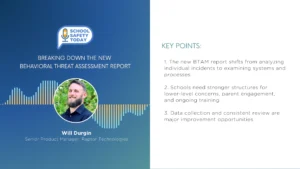The Present and Future Of Cybersecurity Architecture is Being Defined by IoT, its Security Risks, and Zero-Trust Solutions
In today’s rapidly evolving technological landscape, the integration of security systems and cybersecurity architecture is paramount for businesses. Johnson Controls, one of the biggest security system integrators in North America, recognizes the challenges faced by organizations in ensuring the reliability and uptime of their security investments. With the rise of connected devices, cybersecurity threats have become more sophisticated, targeting weak links in the chain to infiltrate IT networks.
At GSX 2023, Johnson Controls unveiled its innovative solution that combines state-of-the-art technology with skilled engineering resources, addressing these concerns head-on. The company’s zero-trust cybersecurity architecture, which includes practices like micro-segmentation and enhanced encryption, offers robust protection against potential breaches. As the digital transformation journey continues, the focus is on harnessing cloud technologies while ensuring a secure environment. Delving deep into these cutting-edge solutions, Jesse Nercessian, Executive Director of Product Management for Security & Global Services at Johnson Controls, offers his invaluable insights.
Jesse’s Thoughts
“So we’re here at the Johnson Controls booth at GSX, and for those that are not familiar with Johnson Controls, because we operate in so many different businesses and so many different domains, we are one of the largest security system integrators in North America where we sell, install, and service lots of different systems with great partners that are here at this show on behalf of our customers.”
Tell me about the solutions you are showcasing at GSX
“Well, we’re really excited here at GSX today to be launching a new digital service offering really focused on our strategic customers. We observed over the last several years three really important pain points from those customer organizations.
“The first is around ensuring that the investments they’ve made in security equipment, making sure that those systems are number one operational, the uptime and reliability of those systems becomes so challenging. The second really is around life cycle asset management, keeping up with continuous updates and helping to plan ahead in the years ahead for the investments that might be required to help keeping everything operating at its best. And finally, and third, really around cybersecurity as threats have continued to emerge and as that landscape has continued to grow, ensuring that the physical networks themselves are protected so we can enable really great experiences and service capabilities.
“So at Johnson Controls, we think we have a great solution for this that we’re launching here at GSX, by really combining on one hand state-of-the-art technology to monitor all these security equipment with decades of monitoring experience and skilled engineering resources to help our customers, to help them take the guesswork and legwork out of system maintenance and risk management.”
What trends are you seeing in cybersecurity?
“As more and more devices are connected, that becomes a new attack vector for malicious actors to come in either or to use that as a weak link in the chain to then cross over to the IT network and cause a lot of damage around ransomware and malware. Our approach at Johnson Controls is that we have integrated deeply a zero-trust cybersecurity architecture that we deploy on behalf of our customers when we go and monitor the systems for proactive health monitoring. So we’re able to then secure that whole environment with zero-trust practices like micro-segmentation, identity-based user role access, and enhanced encryption to really protect that environment for the customer.”
What are the emerging technologies at GSX this year?
“It’s actually all very interrelated with what we’ve spoken about today. Lots and lots of customers looking to take advantage of more cloud technologies either from an analytics perspective or also from a service perspective, and that intersects so clearly with the cybersecurity risks that are out there. So for us, we’re really trying to bring that whole package together to help customers take advantage of the digital transformation they’re already on by adding secure connectivity and protecting the whole environment that they have in their building.”
How do you anticipate the ecosystem evolving?
“So some of the things that we’re thinking a lot about, not just from a security perspective, but how can we help automate and add more intelligence into the broad ecosystem that customers have deployed. And as AssistiveGrader, we’re taking advantage of our open group platform to help add that intelligence at the edge and help deliver a great experience for our customers long-term.”
Article by Rafael Abreu







